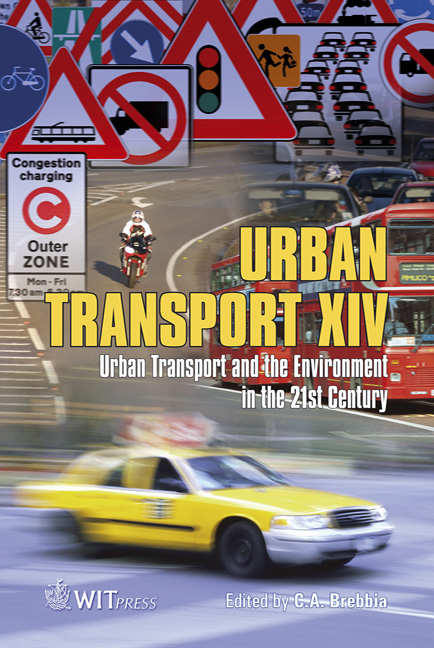Numerical Analysis And Measures For The Evaluation Of Comfort Inside Buses Used For Public Transport
Price
Free (open access)
Transaction
Volume
101
Pages
11
Page Range
373 - 383
Published
2008
Size
2,848 kb
Paper DOI
10.2495/UT080371
Copyright
WIT Press
Author(s)
R. de Lieto Vollaro, S. Grignaffini & A. Vallati
Abstract
This work analyses the thermo hygrometric conditions inside buses used for public transport. The technical solutions, found through the analysis of the thermo hygrometric conditions inside trains, were also set out and extended to buses. This was in order to maximize the conditioning system and the installation of the air distribution terminals. A pattern for the simulation of the thermo fluid dynamics has been researched, in order to evaluate possible improvements in the conditioning system or in the distribution system. The summer time is the most critical period in the year for public transport. This fact is due to the frequent opening of doors, which makes the internal temperature uneven, due to the strong air drafts. It is also important to assess the cooling transition, which can often be long and unbearable for passengers inside. The simulation pattern, produced with Airpack 2.1 (Fluent) software, was then validated with a series of measures and used for the analysis of the main issues concerning discomfort. It was also used for the finalization of the improvements. This assessment addresses the fundamental problem that takes place at a bus stop when passengers exit and enter. It has been compared to the solution studied for installing doors equipped with air screens (or air screened doors). The thermo fluid dynamic results guarantee a significant improvement in thermo hygrometric comfort. Keywords: comfort, buses, numerical analysis. 1 Introduction Today a large number of people spend a lot of time inside the public transport system. Due to serious traffic conditions in big cities the use of these means is
Keywords
comfort, buses, numerical analysis.





